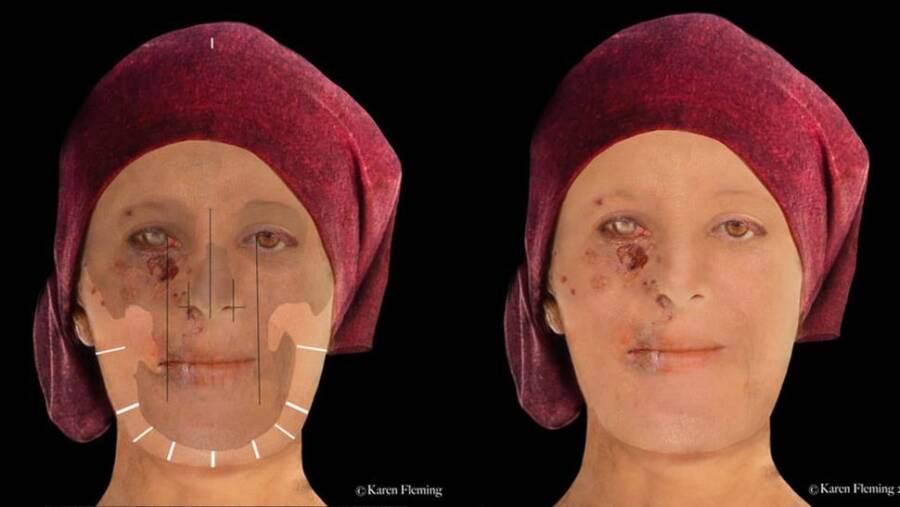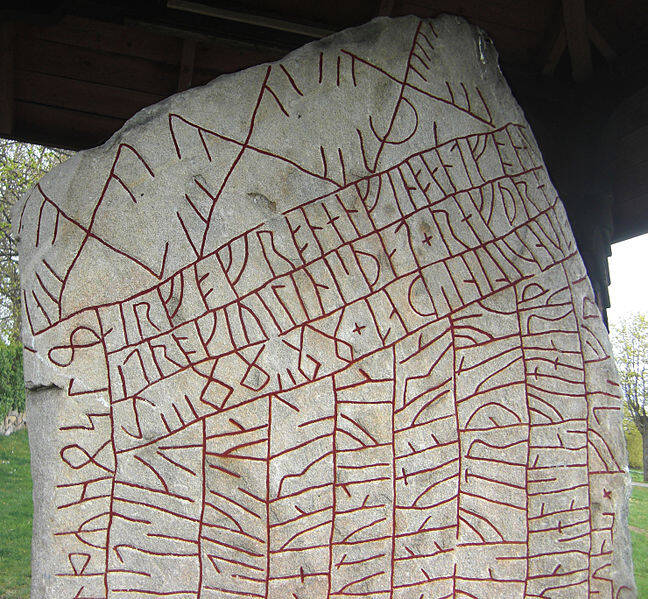500-year-old leprosy victim's face reconstructed, Viking runestone's message deciphered, Amazon warrior women's tomb uncovered.
Researchers Reconstruct Face Of Leprosy Victim 500 Years After Her Grisly Death

The City of Edinburgh CouncilThe reconstructed face of the Scottish woman who died of leprosy some 500 years ago.
When researchers in Edinburgh, Scotland found the skull of a woman who died there of leprosy some 500 years ago, all they had were bones. But with the help of a forensic artist, we can now see what her face actually probably looked like before she finally succumbed to the horrific disease.
“I was able to accurately predict all the other facial features,” forensic artist Lucrezia Rodella told IFLScience, “since the cranium was in good condition, which is pretty uncommon considering how old this skull is.”
Researchers were even able to determine the extent to which she suffered in her final stretch — including the loss of vision in her lesion-plagued right eye.
Ancient Viking Runestone Warns Of ‘Extremely Ominous’ Climate Change, New Discovery Reveals

Wikimedia CommonsThe Rok runestone’s inscriptions, which contain allusions to catastrophic climate change.
The Rok (or Rök) stone, unearthed in the ninth century near Sweden’s Lake Vattern, holds the longest runic inscription in the world. The 700-plus runes (early Germanic symbols) covering all five of the stone’s sides were previously believed to have been dedicated to a fallen young man as well as a number of Viking battles, but researchers now believe the messages warned of dire climate change instead.
Both the famous runestone’s missing chunk and its varying forms of writing have long left scholars unsure about its exact meaning. They do know that the inscriptions refer to “Theodoric,” who some experts believe is Theodoric the Great, the sixth-century ruler of the Ostrogoths in modern-day Italy.
However, the latest theory states that the apocalyptic language on the stone refers not to devastating battles, but to catastrophic climate change instead.
Read more here.
Three Generations Of Ancient Amazon Women Warriors Discovered In A Russian Tomb

Institute of Archaeology RASThe oldest woman found in the grave wore a calathos, which is a ceremonial headdress.
Archaeologists in Russia have uncovered the remains of four Amazon women of different ages buried in the same tomb. This is the first time in history that such a discovery has been made.
A new study estimates one girl to have been between 12 and 13 years old when she died. The second was aged 20 to 29, the third was 25 to 35, and the fourth was 45 to 50.
Dig deeper in this report.





